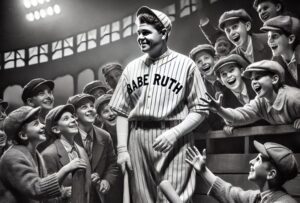In his second season in the Yankee organization, Derek Jeter committed 56 errors at shortstop for the Greensboro Hornets of the Sally League. Given his shoddy work with the leather, Jeter’s future as a professional ballplayer was uncertain.
To top it off, the teenager was having a hard time dealing with life away from home. He racked up $300 phone bills calling his parents back in Kalamazoo, Michigan. He often seemed discouraged and he sulked. Then, in 1994, Jeter took a giant step in his development, a step that in hindsight proved critical in his ascension to starting shortstop for the Yankees, a position he enjoys as the team starts the 2011 season.
Prospect out of Kalamazoo, Michigan
When the 1994 season began Jeter was still just 19 years old, just a couple years removed from playing baseball for Kalamazoo Central and running the courts as a basketball player in AAU games with the likes of Chris Webber and Jalen Rose. Jeter was a high profile prospect, but his defensive woes and perceived lack of concentration were of concern to Yankee brass. But Jeter showed one of his most impressive traits in ’94, launching himself toward his destiny in Yankee Stadium. Jeter worked his butt off to improve his game.
As many prospects do, Jeter played in the Arizona Instructional League in the 1993 off-season. He performed modestly, still making his share of throwing errors and showing inconsistency at the plate. But he wasn’t all that concerned with results that winter. He was learning, observing, and crafting a game plan to drive him to the major leagues.
Jeter watched other players who were good base stealers and copied their methods. He consulted with a hitting coach and spent hours hitting off a tee, working to quicken his long swing. When the 1994 season began, he was sent to Tampa, the Yanks highest Class-A club.
Improved and Impressed Yankee Officials
Immediately it was apparent to Yankee brass that this was a more mature, improved, and smarter Jeter. He swiped 28 bases in 30 tries for Tampa. He batted .329 with eight triples in 69 games. The Yankees promoted him to their Class-AA team in Albany, where they could watch him more closely against stronger pitching. Jeter ate the competition up, batting .377 in his six weeks with the club. He was 12 for 14 in steal attempts.
Equally impressive, Jeter had committed just 18 errors in his 103 games to that point of the season. But it was his overall game – speed, hitting, fielding – that got him a promotion to Columbus, the Yankees top minor league team. In just over a month with the Clippers, where his teammates included Andy Pettitte, Jorge Posada, and Mariano Rivera, Jeter continued to excel. He hit .349 with three homers and 16 RBI.
For his season at all three levels Jeter hit .344 in 138 games with 103 runs scored, 186 hits, 27 doubles, 11 triples, five homers, 68 RBI, and 50 stolen bases in 58 attempts. He also cut his errors more than in half, with 25. His performance earned him Minor League Player of the Year honors from The Sporting News. It was only a matter of time before Jeter would be in pinstripes in The Bronx.
“I’m happy about my season, but it’s not where I want to be,” Jeter said. “It’s nice to do well in the minor leagues, but that’s not the ultimate.”
At the young age of 20 (he turned 20 in June of his breakout season), Jeter’s eyes were on the prize. He had turned the corner and was knocking on the door. He’d start the 1995 season in Columbus, making the International League All-Star team. He earned a September callup by the Yankees, getting his first big league hit. The following spring he won the starting shortstop job and the rest has been, as they say, history.
It was that critical season of 1994, when he played his way up three levels of Yankee minor league stops, when Derek Jeter became Derek Jeter.






